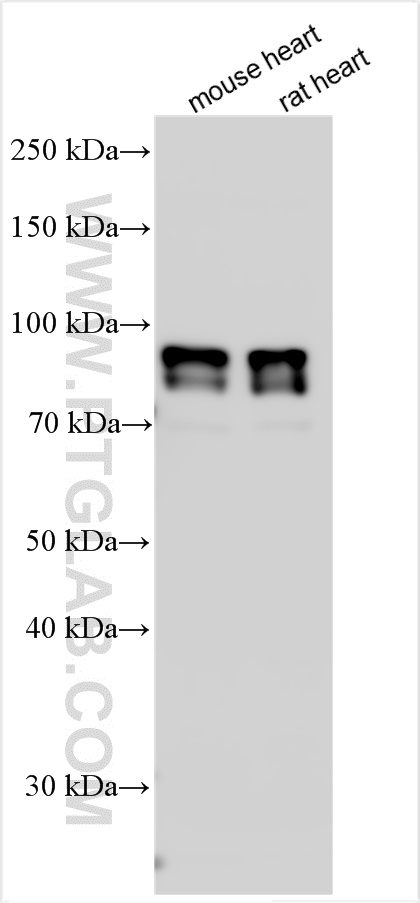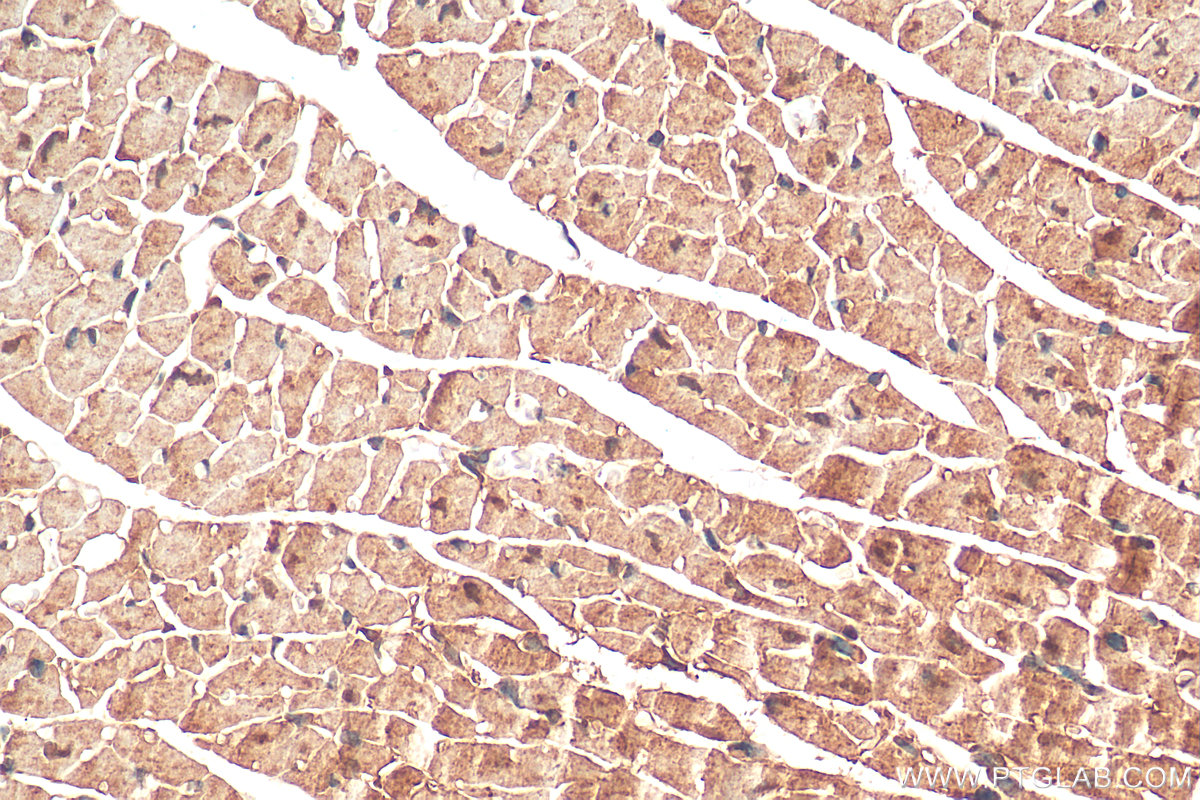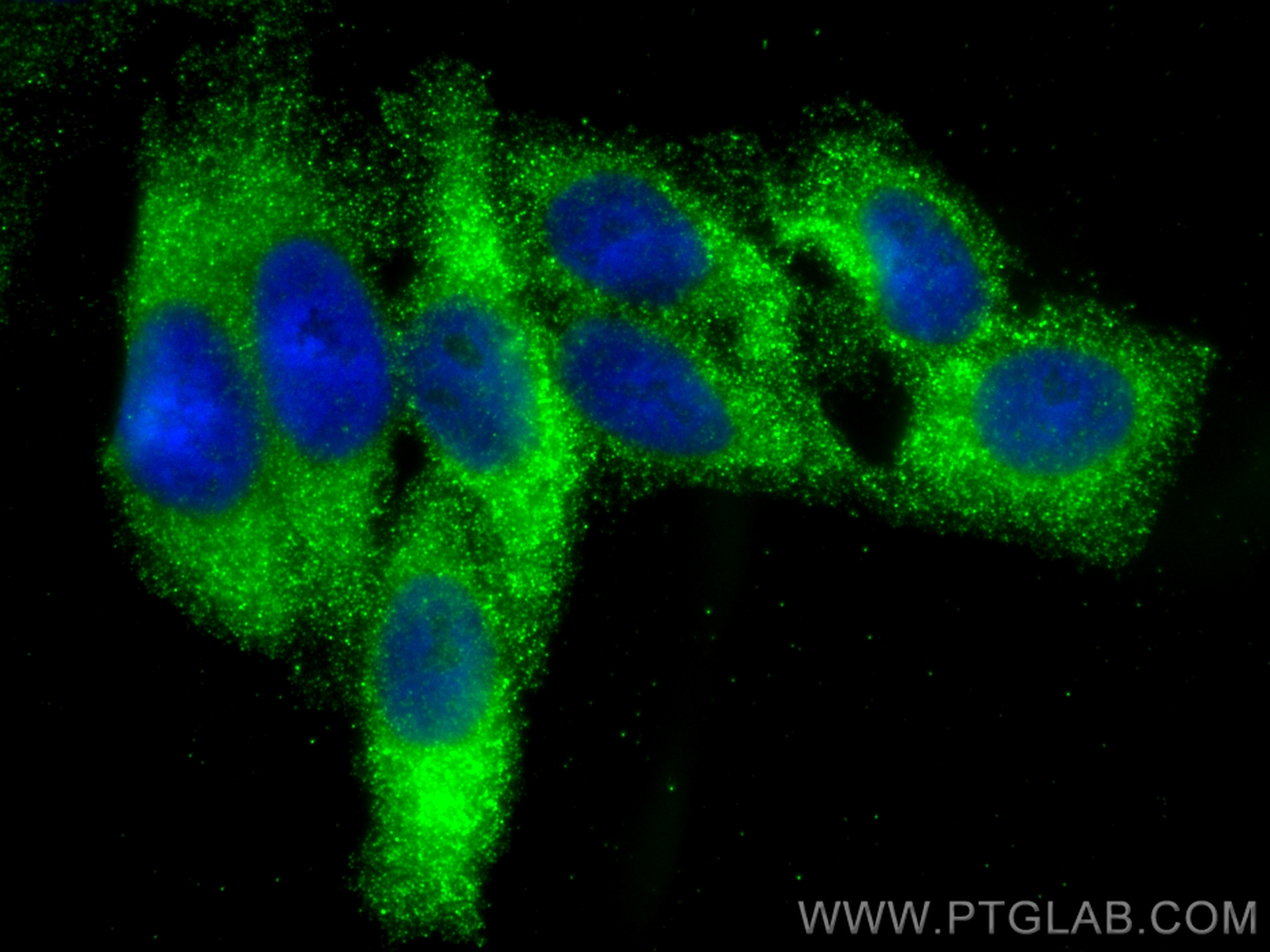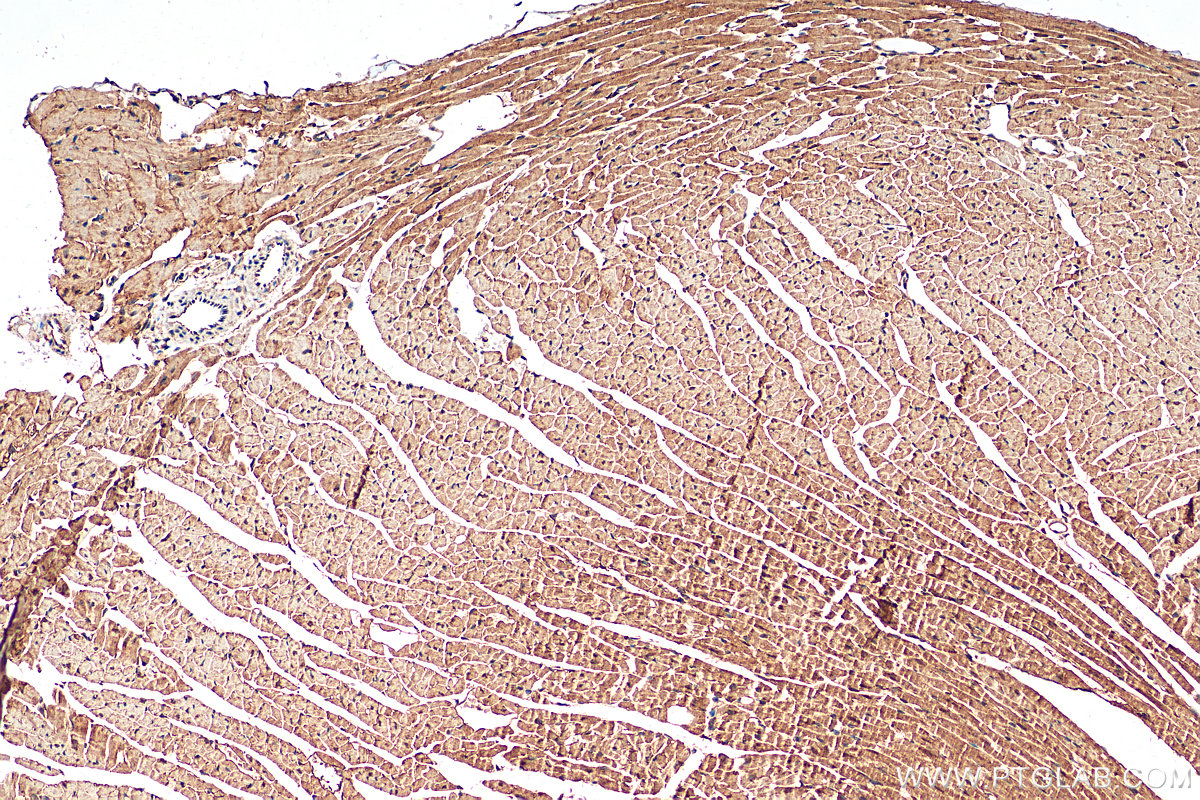验证数据展示
产品信息
23758-1-PBS targets TPC1 in WB, IHC, IF/ICC, Indirect ELISA applications and shows reactivity with human, mouse, rat samples.
| 经测试应用 | WB, IHC, IF/ICC, Indirect ELISA Application Description |
| 经测试反应性 | human, mouse, rat |
| 免疫原 | TPC1 fusion protein Ag20607 种属同源性预测 |
| 宿主/亚型 | Rabbit / IgG |
| 抗体类别 | Polyclonal |
| 产品类型 | Antibody |
| 全称 | two pore segment channel 1 |
| 别名 | TPCN1, Voltage-dependent calcium channel protein TPC1, two pore segment channel 1, Two pore channel protein 1, KIAA1169 |
| 计算分子量 | 816 aa, 94 kDa |
| 观测分子量 | 94 kDa |
| GenBank蛋白编号 | BC136795 |
| 基因名称 | TPCN1 |
| Gene ID (NCBI) | 53373 |
| RRID | AB_2879317 |
| 偶联类型 | Unconjugated |
| 形式 | Liquid |
| 纯化方式 | Antigen Affinity purified |
| UNIPROT ID | Q9ULQ1 |
| 储存缓冲液 | PBS only , pH 7.3 |
| 储存条件 | Store at -80°C. The product is shipped with ice packs. Upon receipt, store it immediately at -80°C |
背景介绍
Two-pore channels (TPCs) are ancient members of the voltage-gated ion channel superfamily, are thought to be non-selective cation channels permeable to Ca2+. They mediate their physiological effects through releasing Ca2+ from acidic organelles in response to cues such as the second messenger, NAADP (nicotinic acid adenine dinucleotide phosphate). Genetic knockout and pharmacological inhibition experiments demonstrate that the two-pore channels, TPC1 and TPC2, are required for infection by Filoviruses Ebola and Marburg in mice.(PMID: 29746898; PMID 25722412) Two pore segment channel 1 (TPC1) is a human protein encoded by the TPCN1 gene.



